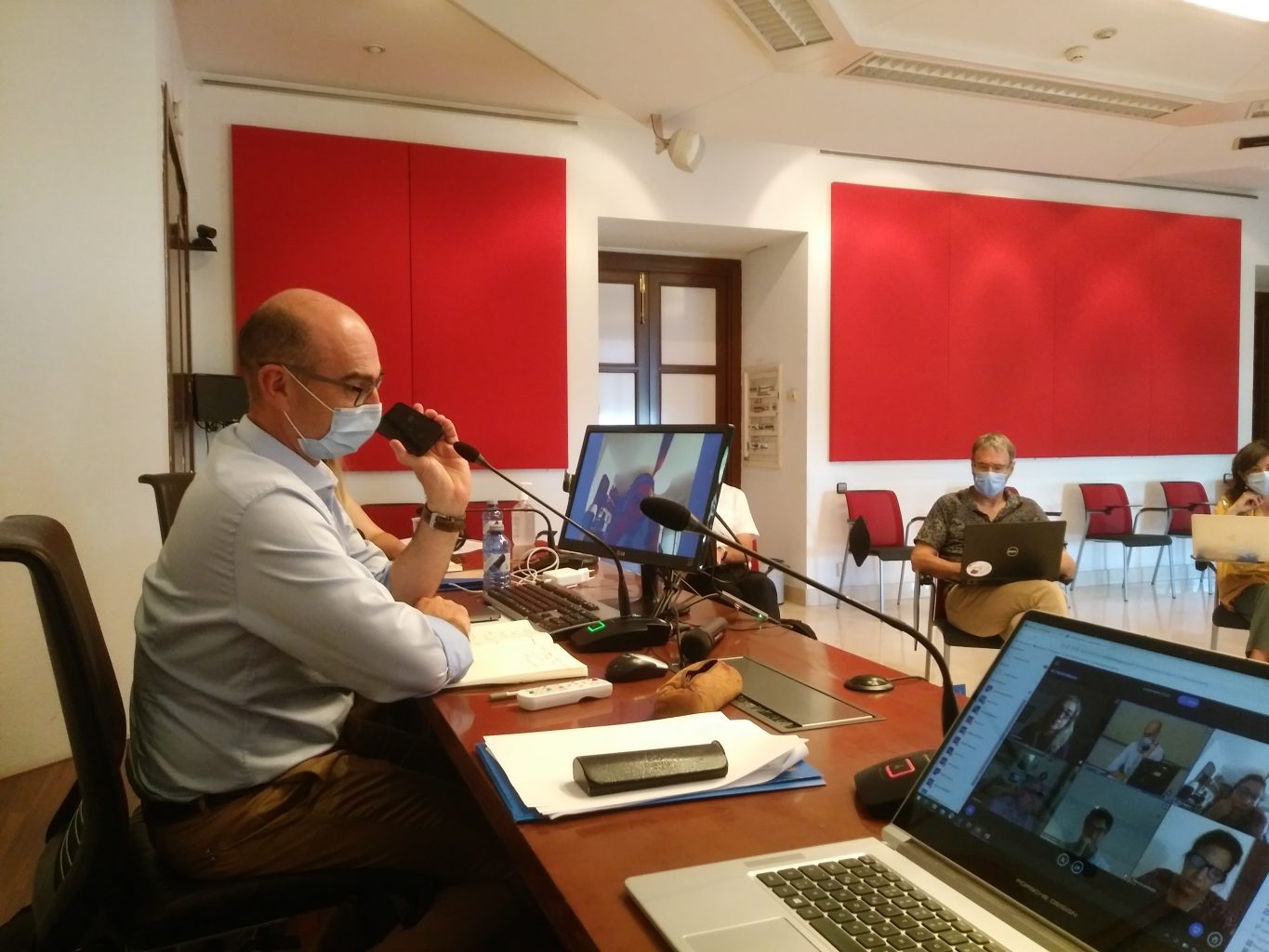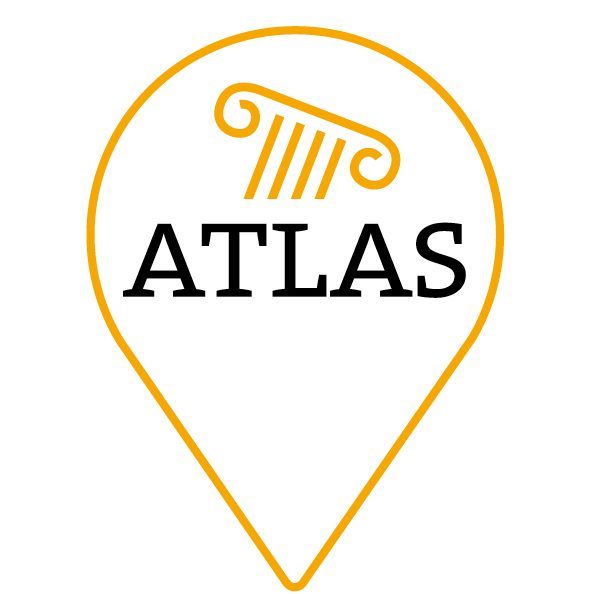After three months of the formal start of the ATLAS project we had the chance to officially launch the project in a semi-presential launch event at the Casa de Velázquez in Madrid!
For those unaware of the Casa de Velázquez (CdV): It is a French institution to promote artistic, cultural and academic exchange between France and Spain. The monumental house is located in the Ciudad Universitaria and overlooks the Manzanares river valley. Besides its beautiful architecture and views, it also holds an impressive library. What a joy to be able to spend a few days there to start our project and work at the CdV.

The official project launch took place on Monday the 12th and Tuesday the 13th of July. Twelve members of the project were able to travel to Madrid, the other half was digitally present. After a year of such hybrid events, the CdV had all organised and we were able to have discussions taking place in Madrid, other parts of Spain, Tunisia, Germany, France and the United Kingdom. It was a great opportunity to meet our project members and discuss different aspects of our project. On Monday morning we started with introducing our project. Sabine and Laurent explained the technical and scientific details of the project, and its set-up with our three seats: Casa de Velázquez in Madrid; Université la Rochelle and Universität Hamburg. Thereafter Frédéric introduced the WebGIS to our members. The view of this hybrid presentation was worth taking a picture of.

Well and not all went as planned with these hybrid presentations. One of the challenges was created by failing microphones. One of our digital participants could not get their microphone to work, but an old-fashioned phone call on speaker simply solved this issue. In the picture below we can see Laurent holding his phone near the microphone so the participants in the room as well as those present digitally (lower right corner) could hear what was said.

By discussing the WebGIS we reaffirmed some of the database questions we had ourselves. The main one is the obvious: How to deal with the messy reality in a structured database. We can make categories to fit our different archaeological and epigraphic finds, but they often do not neatly follow our planned categories. The question is how far do we go to represent the reality in our model? If we create a separate category for each and every building we will not be able to see the larger patterns, as we have every building entered as an individual building. However, we do need to fit our buildings somewhere. A good example is the already mentioned xenodochium of Mérida, it is the only xenodochium in our ten case studies. Should we enter it as a xenodochium? Or would creating ‘hospital’ or ‘hostel’ as a category be more helpful to understand the spread of similar institutions? We will continue improving our database, whilst entering data and encountering new questions.
Our meeting was not only a discussion of the database. As we mentioned before on our Twitter account, we had some keynote lectures planned to start discussions on the research themes. Prof. Dr. Javier Arce gave the first keynote with the title “Los paisajes urbanos en la Antigüedad tardía”. This opened an interesting discussion on the terminology we should employ to discuss the city. In continuation, Prof. Dr. Sonia Gutiérrez opened an interesting debate with her key-note talk “La ciudad y territorio”. Questions included how to define the territory of Late Antique cities. Some held more than one role (thinking about provincial or diocese capitals). How should we treat their administrative territories? The final keynote presentation was given by Prof. Dr. Touihri “Un réseau de villes dans l’Antiquité tardive”. He brought forward that we should look at our ten case studies within their larger network of cities. Only then can we understand the role and development of cities in Late Antiquity. After these three keynotes and the discussions following afterwards we all had the right mind-set for the workshops on the different themes.

We planned three workshops to discuss and organise the different research groups befitting the main research topics: urban life; city and territory; urban networks (see under ‘Research Fields’ on this website). During these discussions, we realised that some themes within the Research Fields require more focus. From there we formed several research groups to work on specific subjects of relevance for our project and in line with the main research fields mentioned before.
All in all we are very happy with our first project workshop. It was great to meet several members in the Casa de Velazquez. It was even better to be able to discuss the main topics with most members using the digital techniques. We look forward to our next workshop in January 2022 in Hamburg. Fingers crossed we are able to all get together in one place!
